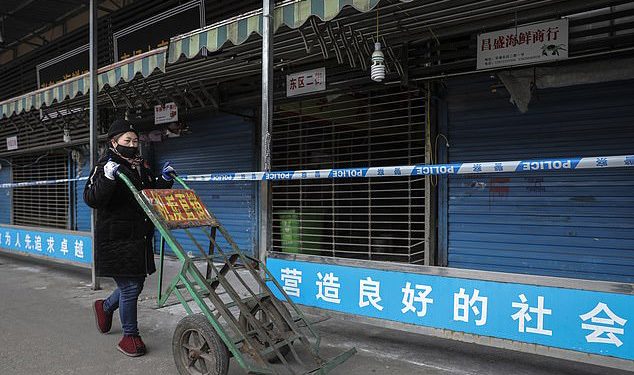Wuhan (China): In the Chinese city of Wuhan, the wet market that spawned the pandemic which has brought the world to its knees now slumbers quietly behind a tidy-looking blue-and-white partition.
But there are ample clues that something toxic once lurked inside the Huanan Seafood Market – police tape, chest-high red barriers, and staff in head-to-toe white hazmat suits lugging equipment.
Chinese disease control officials have previously identified wild animals sold in the market as the source of the coronavirus pandemic that has taken more than 33,000 lives worldwide so far and rocked the global economy.
A price list issued by one merchant at the sprawling emporium, which circulated on China’s internet in January, contained a smorgasbord of exotic wildlife including civets, rats, snakes, giant salamanders and even live wolf pups.
Markets such as this are the final stop in what conservationists say is a brutal trade in wild animals that is fuelled in large part by Chinese consumption.
The Wuhan market was sealed and disinfected beginning in January after the outbreak began to spread. Now only disinfecting crews go in and out. Long red banners stretch across the temporary blue wall, exhorting passersby to do their part in the fight against the virus.
As the global health disaster has intensified, sparking tension between Beijing and Washington, the birthplace of the virus has since disappeared behind the temporary blue-and-white wall, and an inner curtain of black sheeting.
Mentions of the site have likewise disappeared from government epidemic discourse and official media reports, as some Chinese officials have pushed a new narrative that the virus might not have originated in the market, while offering no evidence.
After a more than two-month lockdown to contain the virus, in which citizens of Wuhan and the rest of Hubei province were confined to their homes, life is inching back toward normality.
Border controls are loosening, allowing residents who were stranded outside the province – as well as foreign journalists – to begin re-entering in recent days.
But the market’s fate seems sealed.
For weeks, crews have carefully disinfected and then removed all of its merchandise and other contents, followed by further rounds of disinfecting the entire site, according to state media reports.
The market is slated for permanent closure, according to local media reports, though no plans to demolish the site have been announced.
China has, however, announced plans for a ‘comprehensive’ ban on the wildlife trade that reportedly flourished there.
It was not immediately clear what locals in the area thought of the continued presence of the market, which lies among tall and modern residential blocks.
Adjacent streets remained deserted Monday, with transport controls and other restrictions on movement still in place throughout the city.
But one local community official shrugged off the market’s toxic legacy. It told this agency: “I don’t think local people have any fear when they get near the market. Life will return to normalcy very soon.”
AFP






































